Alaska Airlines’ Pet Policy provides structured guidelines for traveling with pets, service animals, and psychiatric service dogs. The airline recognizes the importance of animal welfare, passenger safety, and compliance with federal regulations, which is why its policies are among the most detailed in the industry.
Under the Alaska Airlines pet policy, small dogs and cats are accepted in the cabin, while larger animals and additional species, such as ferrets, guinea pigs, hamsters, non-poisonous reptiles, pot-bellied pigs, rabbits, and tropical fish, travel in the baggage compartment or through the Alaska Air Cargo PetConnect program.
Emotional support animals fall under the Alaska Airlines ESA policy and are classified as standard pets, while only trained service dogs receive travel exemptions under the Alaska Airlines service dog policy.
What is Alaska Airlines’ Pet Policy Policy
Alaska Airlines maintains one of the most detailed pet travel programs in the airline industry, emphasizing passenger safety, animal welfare, and compliance with federal regulations. The Alaska Airlines dog policy allows small dogs and cats to travel in-cabin, while larger pets and other species—including rabbits, guinea pigs, hamsters, ferrets, pot-bellied pigs, non-poisonous reptiles, and tropical fish—are accepted in the baggage compartment or through the Alaska Air Cargo PetConnect program. Under the Alaska Airlines ESA policy, emotional support animals are no longer recognized as service animals; instead, they fall under standard pet travel rules. Only fully trained service dogs, including psychiatric service dogs, are eligible for recognition under Alaska Airlines’ service dog policy.
What Are the Reasons Behind Alaska’s Pet Policy
The Alaska Airlines service animal policy is rooted in safety, accessibility, and animal welfare. Kennel size rules ensure that animals are not confined in restrictive spaces, while restrictions on brachycephalic breeds such as Bulldogs or Persian cats reduce the risk of respiratory distress during flights. Standardized documentation for service dogs promotes compliance with U.S. DOT regulations and helps protect accessibility rights for travelers with disabilities. Overall, these guidelines are designed to strike a balance between humane treatment, passenger comfort, and regulatory standards.
Alaska Airline’s Pet Policy Updates and Changes
Since January 2021, emotional support pets have been reclassified as standard animals under Alaska Airlines’ ESA policy, aligning with federal rules that limit service animal recognition to dogs that have been trained. The airline requires handlers to submit the Alaska Airlines Service Dog Form, also known as the DOT Service Animal Air Transportation Form, before travel.
As of June 5, 2025, in-cabin acceptance is limited to dogs and cats only. Passengers with earlier bookings for rabbits and household birds retain eligibility until April 4, 2026. Fee adjustments also reflect current operational standards: $100 each way for in-cabin pets and $150 each way for pets in the baggage compartment, with a reduced fee of $100 for travel entirely within Alaska or for active-duty military personnel on official orders.
What Is Alaska Airlines’ Service Dog Policy?
Alaska Airlines welcomes fully trained service dogs to travel in the cabin at no additional charge.
The airline complies with Department of Transportation (DOT) and Air Carrier Access Act (ACAA) regulations, which means only fully trained service dogs, including psychiatric service dogs, are permitted. Emotional support animals (ESAs) and service dogs still in training are not accepted.
Alaska Airlines does not impose breed restrictions. However, service dogs must remain under the handler’s control at all times, behave appropriately in public, and be harnessed, leashed, or tethered while onboard. If a dog is disruptive, aggressive, or poses a safety risk, the airline can deny boarding.
How Do You Add a Service Dog to an Alaska Airlines Reservation?
Traveling with a service dog on Alaska Airlines requires the following steps:
- Verify Eligibility: Only fully trained service dogs are allowed. ESAs and service dogs in training are not permitted.
- Obtain the DOT Form: Download the U.S. Department of Transportation’s Service Animal Air Transportation form.
- Complete the Form: The form confirms your dog is trained, vaccinated, and capable of appropriate behavior in public.
- Submit the Paperwork: Alaska requires the completed DOT form to be submitted at least 48 hours before departure. If your booking is made within 48 hours of your flight, you may present the form in person at the airport.
The handler is responsible for the dog’s behavior and safety during travel. Service dogs must remain harnessed or leashed and supervised at all times.
Do You Need to Notify Alaska Airlines Before Flying With a Service Dog?
Yes, Alaska Airlines requires passengers to notify the airline in advance when traveling with a service dog.
The DOT form must be provided at least 48 hours prior to travel if the booking allows. For reservations made closer to departure, the documentation can be submitted at the airport.
While health certificates are not required, the DOT Service Animal Air Transportation form is mandatory. This form confirms that the dog is a legitimate service animal, properly vaccinated, and trained for disability-related tasks.
Do Service Dogs Fly for Free on Alaska Airlines?
Yes. Trained service dogs are allowed to fly free of charge on Alaska Airlines.
Like other U.S. carriers, Alaska cannot apply pet fees to service animals under DOT rules. However, fees do apply for regular pets and ESAs, as they are not recognized as service animals.
Are There Breed Restrictions for Service Dogs on Alaska Airlines?
No, Alaska Airlines does not have breed restrictions for service dogs.
All breeds are accepted, provided the dog is trained to perform tasks related to a disability and maintains proper behavior during the journey.
Can You Travel With More Than One Service Dog on Alaska Airlines?
Yes. Alaska Airlines permits passengers to travel with more than one service dog, as long as each dog is individually trained to perform disability-related tasks and the required DOT form is submitted for each animal.
Both dogs must remain leashed, tethered, or harnessed at all times and under the handler’s control.
Are There Size Restrictions for Service Dogs on Alaska Airlines?
Alaska Airlines does not impose weight or breed limits on service dogs, but the dog must fit in the passenger’s seating area.
Service dogs are required to remain on the floor at the handler’s feet or, if small enough, may sit on the passenger’s lap. Dogs too large to fit safely in the cabin area may not be accommodated unless alternate arrangements are available.
What Are Alaska Airlines Requirements for Traveling With Your Pet
Proper preparation under Alaska Airlines’ pet policy ensures a smoother journey for both animals and their handlers. The airline emphasizes the importance of documentation, health certifications, and the use of safe travel crates. Puppies and kittens must be at least eight weeks old, fully weaned, and eating solid food for at least five days before departure. Microchips and identification tags are strongly encouraged to prevent mishandling, while international destinations and Hawaii impose additional health and quarantine requirements.
Necessary Documentation
Alaska Airlines requires handlers traveling with service dogs to complete the DOT Service Animal Air Transportation Form, which verifies the training, health, and behavior of the service dog.
- Health certificate: Veterinary clearance required for baggage or cargo transport, issued within ten days of departure.
- Vaccination records: Proof of rabies and other core vaccines.
- Identification tag: Contact information attached to the collar.
- Service dog documentation: Completed DOT Service Animal Air Transportation Form verifying training, health, and behavior.
Emotional support animals are no longer eligible as service animals. They fall under the general pet category and do not require an ESA certification for travel. For pets traveling in the baggage compartment or through cargo, a veterinary health certificate issued within ten days of departure is required. In-cabin pets are exempt.
Health and Vaccination Requirements
Vaccination records and veterinary clearance ensure the well-being of both animals and passengers. Proof of rabies vaccination is essential, while additional vaccinations are strongly recommended. Senior pets or animals with pre-existing medical conditions must obtain veterinary approval prior to travel. Preventive care, such as flea treatment and parasite control, helps maintain health standards during the journey.
Alaska Airlines Crate Requirements
Kennels must meet USDA and IATA standards and comply with Alaska Airlines pet carrier requirements.
- Size: The crate must allow the dog to stand, turn, and lie comfortably.
- Compliance: Kennels must meet USDA and IATA standards.
- Ventilation: Openings on at least three sides to provide airflow.
- Labeling: Clear identification, including pet name and contact details.
Preparing Your Dog for Travel
Travel preparation reduces stress for both animals and handlers.
- Familiarize gradually. Encourage the pet to become comfortable with the crate before departure.
- Schedule exercise. Provide adequate activity to reduce stress.
- Limit feeding. Offer light meals before travel.
- Keep essentials ready. Pack food, water, and comfort items.
- Avoid sedation. Airline policy prohibits tranquilizers for safety reasons.
Handlers are advised to focus on creating a calm travel environment through gradual preparation.
What is Alaska Airlines In-Cabin Pet Policy?
In-cabin pet travel offers a convenient option for smaller animals under Alaska Airlines’ in-cabin pet policy. Space is limited, so reservations must be made in advance to secure availability. Only dogs and cats are accepted for in-cabin travel, with restrictions on total capacity—eight carriers in the main cabin and three in first class.
Size and Weight Restrictions
Approved carriers for in-cabin travel must not exceed 17″ x 11″ x 9.5″. Soft-sided carriers with flexible tops are best suited for use under the seat. Each carrier accommodates up to two pets of the same species, provided they fit comfortably and meet weight requirements.
Fees and Reservations
The in-cabin pet fee is $100 per pet, each way, charged at the time of booking or check-in. Service dogs remain exempt under Alaska Airlines’ service animal policy, while emotional support animals are subject to a fee under the Alaska Airlines ESA policy. Advance reservations are strongly encouraged, as in-cabin slots are limited and filled on a first-come, first-served basis.
Tips for a Comfortable In-Cabin Experience
Handlers improve travel comfort by following some practices.
- Choose direct flights. Fewer transfers reduce stress.
- Book early. Secure a spot before capacity is reached.
- Provide familiar bedding. Create a sense of security.
- Hydrate wisely. Offer water before and after the flight.
- Use positive reinforcement. Reward calm behavior for smoother travel.
What is Alaska Airlines Pet Cargo Policy
For animals that exceed in-cabin size limits, Alaska Airlines offers a checked baggage option, as well as the PetConnect cargo program. These services are designed for larger dogs and other species allowed under Alaska Airlines’ pet travel rules. Safe transport depends on the use of airline-approved kennels, proper labeling, and adherence to weight restrictions.
Size and Weight Restrictions
Pets traveling as checked baggage must not exceed 150 pounds, including the weight of the kennel. Alaska Airlines prohibits brachycephalic breeds from traveling in this category due to health risks. Crates must meet IATA standards and allow the animal to move naturally within.
Fees and Reservations
The checked baggage pet fee is $150 each way per animal, except for travel entirely within Alaska or official military orders, in which case the cost is reduced to $100. Reservations for checked baggage transport are required, as availability depends on aircraft conditions and seasonal restrictions.
Tips for a Safe Checked Baggage Experience
Safety begins with crate preparation.
- Label crates. Include both pet and owner details.
- Use absorbent bedding. Maintain cleanliness and comfort.
- Attach spill-proof water containers. Stay hydrated during travel.
- Avoid extreme weather. Book flights during moderate conditions.
- Arrive early. Allow adequate time for check-in procedures.
Post-arrival monitoring ensures the animal’s well-being after transport.

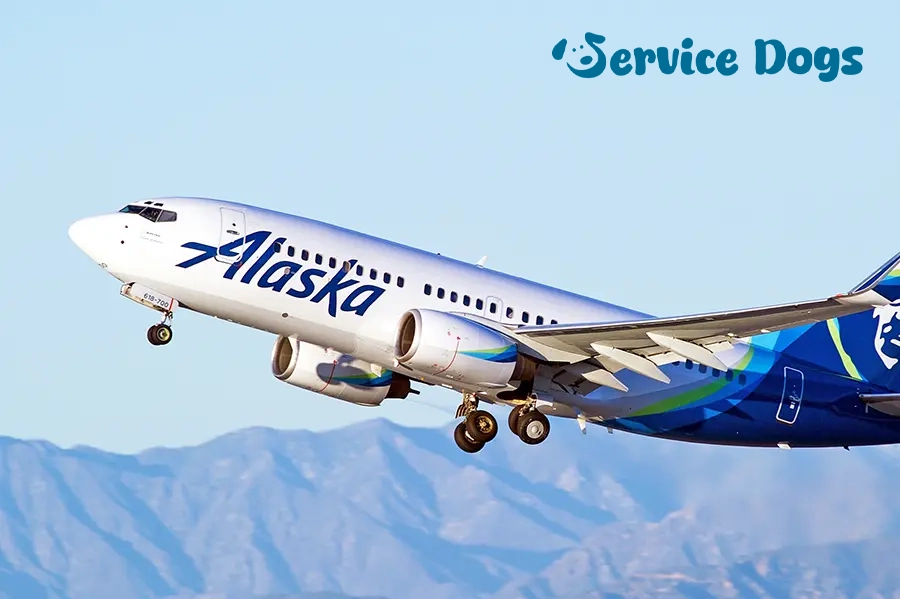

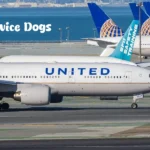
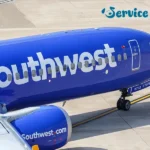
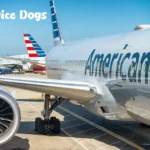
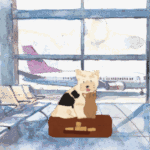
Leave a Reply